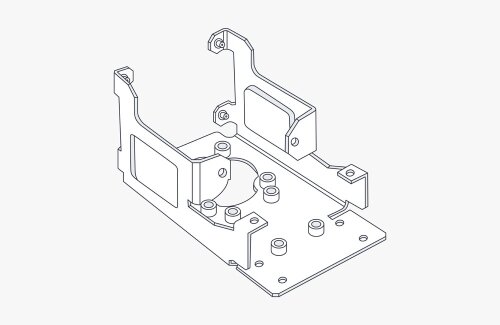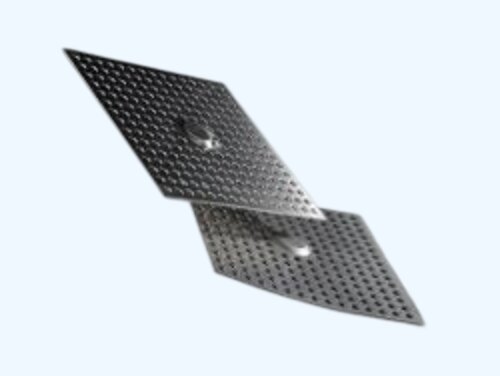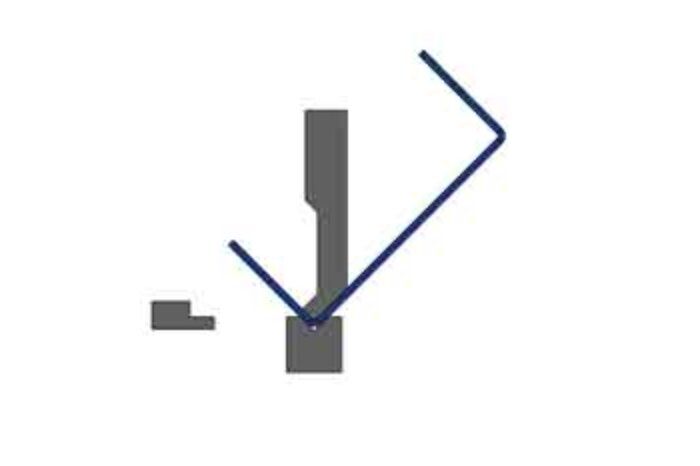Metal parts face corrosion, wear, and poor paint adhesion. These issues reduce lifespan and increase maintenance costs. Engineers and manufacturers need a reliable way to protect metal surfaces. Phosphating offers a solution. It creates a durable layer that improves corrosion resistance and coating adhesion.
Many industries rely on phosphating to extend the life of metal parts. The process is straightforward, but choosing the right type depends on the application. Let’s look at how it works and why it matters.
What Is Phosphating?
Phosphating is a chemical process in which a phosphate coating is applied to a metal surface. This coating is a difficult-to-dissolve transformation layer composed of metal phosphates. It acts as a protective layer, shielding the metal from corrosion, wear, and other environmental damage.
Phosphating works through chemical reactions between the metal surface and a phosphate solution. When the metal is immersed in the solution, the phosphoric acid reacts with the metal ions to form a layer of insoluble phosphate crystals.
This layer bonds tightly to the metal, creating a rough, porous surface. The roughness helps paint and other coatings adhere better, while the porosity allows additional treatments, like oil retention for lubrication.
Chemical Reactions in Phosphating
The primary chemical reaction in phosphating can be simplified as follows:
- Metal Dissolution: The phosphoric acid reacts with the metal surface, releasing metal ions.
Example: Fe (iron) + 2H₃PO₄ → Fe(H₂PO₄)₂ + H₂
- Phosphate Layer Formation: The metal ions react with phosphate ions to form insoluble phosphate crystals.
Example: 3Fe(H₂PO₄)₂ → Fe₃(PO₄)₂ + 4H₃PO₄
- Coating Growth: The phosphate crystals grow and bond to the metal surface, creating a uniform layer.
Types of Phosphate Coatings
Different phosphate coatings serve specific purposes. Each type has unique properties that make it right for particular jobs.
Zinc phosphate
Zinc phosphate is the most common coating type for serious corrosion protection. It forms a thick, crystalline layer that ranges from light to dark gray.
This coating works well for outdoor applications and harsh environments. It creates a strong bond with paint and provides excellent rust resistance.
Zinc phosphate treatments typically contain zinc phosphate, phosphoric acid, and special additives. Depending on the specific formula and process, the coating thickness ranges from 5 to 25 microns.
Car parts, appliances, and outdoor equipment often use zinc phosphate coatings. The treatment costs more than iron phosphate but lasts longer in harsh conditions.
Iron phosphate
Iron phosphate creates a thinner, lighter coating than zinc phosphate. The resulting layer appears blue-gray to black and provides moderate corrosion protection.
This coating type costs less and processes faster than zinc phosphate. It works well for indoor products or items that don’t face harsh conditions.
The coating thickness typically ranges from 0.3 to 1.0 microns. While thinner than zinc phosphate, it still provides a good base for paint and light corrosion protection.
Manganese phosphate
Manganese phosphate forms the thickest and darkest coating of the three main types. It creates a deep black or dark gray layer with excellent wear resistance.
This coating reduces friction between moving parts and helps them break in more smoothly. It also holds oil well, making it ideal for engine parts.
Manganese phosphate layers typically range from 5 to 30 microns thick. The process runs at higher temperatures than other phosphating methods.
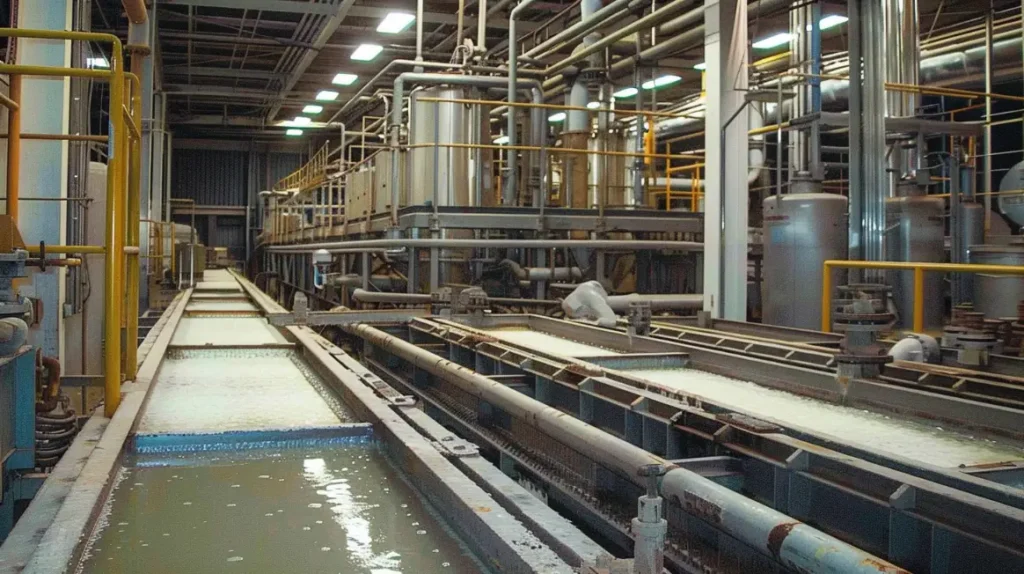
The Phosphating Process Step-by-Step
Every step in phosphating matters for quality results. Following the process correctly creates strong, consistent coatings.
Step 1: Pre-Treatment: Preparing the Surface
Surface preparation makes or breaks the phosphating process. Oils, dirt, rust, and other contaminants must be obliterated.
The cleaning process typically includes:
- Alkaline cleaning to remove oils and greases
- Acid etching to remove rust and scale
- Thorough water rinsing between each step
Some shops use mechanical methods, such as shot blasting or sanding, first. These methods remove heavy rust and scale before chemical cleaning.
Step 2: Acidic Phosphate Bath Application
Once clean, the metal enters the phosphate bath. This solution contains phosphoric acid and phosphate salts of zinc, iron, or manganese.
The bath temperature typically ranges from 130-180°F (55-82°C). Depending on the coating type and thickness needed, the metal stays in the bath for 5-30 minutes.
During this time, the acid attacks the metal surface, starting the chemical reaction that creates the phosphate layer.
Step 3: Crystallization and Coating Formation
Phosphate crystals form on the surface as the acid reacts with the metal. These crystals grow and spread until they cover the entire part.
The coating gradually changes color as it forms. This visual change helps operators monitor the process.
Step 4: Rinsing and Drying
After the coating forms, thorough rinsing removes excess chemicals. Poor rinsing can leave reactive chemicals that cause corrosion later.
Many processes include a final sealing rinse. The parts then dry completely, usually with forced air or heat. Any trapped moisture can lead to corrosion under the coating.
Key Factors Affecting Phosphating
Success in phosphating depends on several critical factors. Getting these right leads to consistent, high-quality coatings.
Temperature and concentration of solutions
Temperature directly affects reaction speed and crystal formation. Too cold, and the coating forms slowly or incompletely. It is too hot, and it forms too quickly with poor structure.
Most phosphating baths work best between 130-180°F (55 and 82°C). The exact temperature depends on the coating type and the specific formula used.
Solution concentration must stay within tight limits. If it is too weak, the coating forms too slowly or thinly. If it is too strong, it can etch the metal too aggressively.
Pre-treatment requirements
Clean metal surfaces are essential for suitable phosphate coatings. Even tiny amounts of oil or dirt can prevent proper coating formation.
Different metals need different cleaning approaches:
- Steel may need strong alkaline cleaners and acid activation
- Zinc-coated steel often needs milder cleaning to avoid damaging the zinc layer
- Aluminum requires special cleaners due to its different surface chemistry
Coating thickness and uniformity
Coating thickness affects both protection level and paint adhesion. Too thin, and the coating won’t protect well. Too thick, and it may flake or crack.
An even coating provides consistent protection across the entire part. Complex shapes present challenges for even coating. Proper racking and bath agitation help the solution reach all surfaces equally.
Industrial Applications of Phosphating
Phosphating is a versatile process used across various industries to enhance the performance and durability of metal parts. Let’s explore how it’s applied in key sectors.
Automotive Industry
The automotive industry relies heavily on phosphating to protect components from corrosion and wear.
Common Uses:
- Car bodies and frames for rust prevention.
- Engine parts like pistons and cylinders for wear resistance.
- Fasteners and bolts to ensure long-term reliability.
Aerospace Industry
In aerospace, phosphating is critical for ensuring the safety and performance of aircraft components.
Common Uses:
- Landing gear and hydraulic systems for corrosion resistance.
- Engine components to withstand high temperatures and stress.
- Structural parts to maintain strength and reliability.
Metal Fabrication and Manufacturing
Phosphating is widely used in metal fabrication to prepare parts for further processing or use.
Common Uses:
- Sheet metal parts for appliances and machinery.
- Tools and equipment for wear resistance.
- Structural steel for construction projects.
Oil and Gas Industry
In oil and gas, phosphating protects equipment from harsh operating conditions.
Common Uses:
- Pipelines and valves for corrosion resistance.
- Drilling equipment to withstand abrasive environments.
- Storage tanks to prevent rust and leaks.
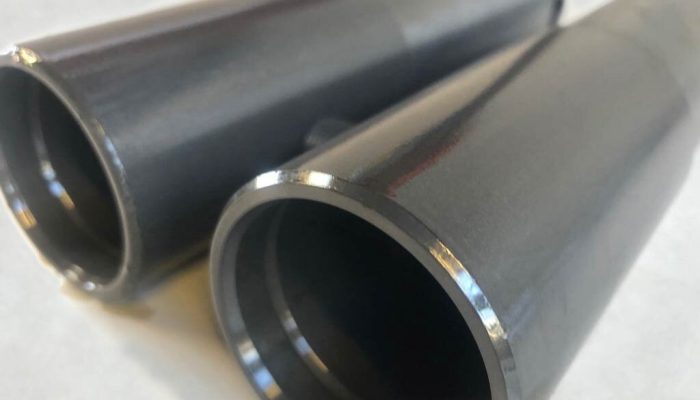
Advantages and Limitations of Phosphating
Phosphating offers many benefits, but it also comes with some challenges. Let’s weigh the pros and cons to understand where it shines and where it falls short.
Benefits of Phosphating
Improved Corrosion Resistance
Phosphating creates a protective barrier that shields the metal from rust and corrosion. This is especially important for parts exposed to moisture, chemicals, or outdoor environments.
Enhanced Paint Adhesion
The rough, porous surface of a phosphate coating helps paint, and primers stick better. This reduces peeling and chipping, giving parts a longer-lasting finish.
Wear Resistance
Phosphate coatings, especially manganese phosphate, reduce friction and wear on moving parts. This makes them ideal for high-stress applications like gears and bearings.
Cost-Effectiveness
Compared to other coating methods, phosphating is relatively affordable. It provides excellent protection without breaking the bank, making it a popular choice for manufacturers.
Drawbacks and Challenges
Environmental Concerns and Chemical Disposal
Phosphating involves chemicals like phosphoric acid, which need careful handling and disposal. Improper management can harm the environment, so strict regulations apply.
Limitations in Extreme Environments
While phosphating works well in many conditions, it may not hold up in extreme temperatures or highly corrosive environments. In such cases, more advanced coatings might be needed.
Alternatives to Phosphating
Other methods, like electroplating or powder coating, offer different benefits. Electroplating provides superior corrosion resistance, while powder coating offers a wider range of colors and finishes.
Phosphating vs. Other Surface Treatments
Phosphating is just one of many ways to protect metal surfaces. Let’s compare it to other popular methods to see how it stacks up.
Phosphating vs. Anodizing
Phosphating:
- Works on a variety of metals, including steel and iron.
- Creates a rough, porous surface ideal for paint adhesion.
- Offers good corrosion resistance and wear protection.
- Primarily used for aluminum.
- It forms a hard, durable oxide layer that can be dyed in various colors.
- Provides excellent corrosion resistance and aesthetic options.
When to Choose:
- Use phosphating for steel parts needing paint adhesion or wear resistance.
- Choose anodizing for aluminum parts requiring color options or enhanced durability.
Phosphating vs. Galvanizing
Phosphating:
- Adds a thin phosphate coating for corrosion resistance and paint adhesion.
- Cost-effective and suitable for indoor or moderate outdoor use.
- Involves coating steel or iron with a layer of zinc for superior corrosion protection.
- It is ideal for outdoor or highly corrosive environments.
When to Choose:
- Use phosphating for cost-effective protection in less harsh conditions.
- Opt for galvanizing for parts exposed to extreme weather or moisture.
Phosphating vs. Powder Coating
Phosphating:
- Prepares metal surfaces for further treatments like painting.
- Provides a rough surface for better paint adhesion and elemental corrosion resistance.
- Applies a dry powder cured to form a hard, durable finish.
- Offers a wide range of colors and textures for aesthetic appeal.
When to Choose:
- Use phosphating as a base layer for parts that will be painted or coated.
- Choose powder coating for finished products needing a decorative or highly durable surface.
Conclusion
Phosphating is a versatile and cost-effective process that enhances the durability and performance of metal parts. Creating a protective phosphate coating improves corrosion resistance, paint adhesion, and wear resistance, making it a valuable solution for the automotive, aerospace, and manufacturing industries.
At Shengen, we specialize in high-quality phosphating and other metal finishing services. Whether you need corrosion resistance, improved paint adhesion, or wear protection, our team is here to help. Contact us today to discuss your project and discover how we can deliver the perfect solution for your needs.
FAQs
How Long Does a Phosphate Coating Last?
A phosphate coating can last years, depending on the environment and application. In moderate conditions, it provides long-lasting protection against corrosion and wear.
Can Phosphating Be Applied to All Metals?
Phosphating is best for steel, iron, and zinc. It’s less effective for non-ferrous metals like aluminum or copper, which may require different treatments.
Is Phosphating Environmentally Friendly?
Phosphating involves chemicals that need careful handling and disposal. While effective, proper waste management is crucial to minimize environmental impact.
What Chemical Is Used in Phosphating?
The primary chemical used is phosphoric acid. It reacts with the metal surface to form the protective phosphate coating.
How Often Should Phosphating Equipment Be Maintained?
Regular maintenance is essential. Inspect and clean equipment monthly and perform thorough checks every 6-12 months to ensure consistent performance and quality.
More Resources:
Phosphating Equipment Maintenance – Source: Feeco
Metal Finishing Effluent Guidelines – Source: EPA
Industrial Painting and Coating Solutions – Source: Dnow
Hey, I'm Kevin Lee

For the past 10 years, I’ve been immersed in various forms of sheet metal fabrication, sharing cool insights here from my experiences across diverse workshops.
Get in touch

Kevin Lee
I have over ten years of professional experience in sheet metal fabrication, specializing in laser cutting, bending, welding, and surface treatment techniques. As the Technical Director at Shengen, I am committed to solving complex manufacturing challenges and driving innovation and quality in each project.

